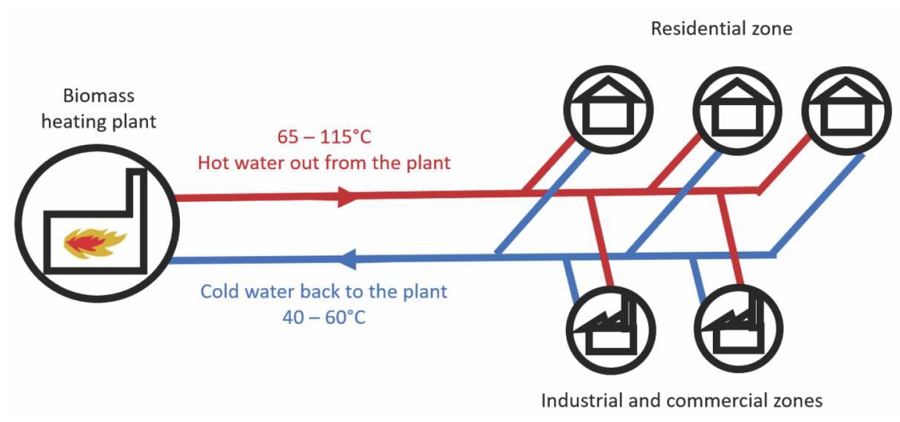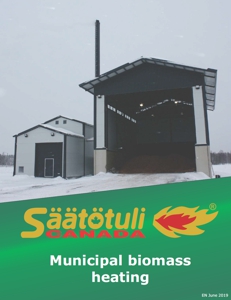Our brochure on municipal district heating is now available in English. Inside you will find a short description of what is biomass heating and how municipal heat networks work. It features also a short description on pre-assembled biomass heating plants and how to build a municipal heat network powered by green energy when starting from scratch.

Municipal biomass district heating
Municipal heat networks are water-based networks that cover parts or a whole municipality.

The heat network is made with underground isolated heating pipes that transfer the heated water to industries, businesses, municipal and residential buildings, and with isolated pipes that take the cold water back to the biomass heating plant. The users of the heat network have simply a heat exchanger that delivers heat to their individual location. That heat exchanger is equipped with an energy meter that will be the base for invoicing.
The hydronic heat network can be built with metal piping like on the pictures above, or with pre-insulated PEX piping that is often easier and more cost-effective to install for smaller networks.
Advantages of biomass district heating
Heating realised with this kind of municipal heat networks have several benefits for the users:
- Heat that is always available with an average of 2 to 3 hours downtime per year (usually during the planned maintenance operations in summer time).
- A carbon-neutral green energy providing local jobs.
- A stable and economical price.
- No furnace maintenance, no fuel purchases… The network operator takes care of all.
That kind of heating system has also huge benefits for the municipalities:
- A cost-effective heating for the municipal buildings.
- A large drop in the carbon footprint of the municipality.
- Local jobs to do the maintenance of the boiler and to make and deliver the biomass fuel from local resources.
- Money used for fossil-fuel heating will go away to petrol-producing provinces or countries. Money used for biomass heating will continue to circulate in the local economy.
A huge study on the social impact of biomass heating has been realized in Finland. Do not hesitate to contact us if you would like to receive a translation of that study.
Size of biomass district heating networks
In Finland, the biggest municipal heat network is installed in the town of Oulu and is made with more than 770km of piping. 80% of the heat on that network is made with biomass (mostly wood and peat). Of course, it is totally impossible to build such a huge network covering a whole municipality from scratch; the fuel infrastructure has to grow with the network and the investments would be too important. The containerised biomass heating plants provide an interesting solution to start up municipal heat networks. You can see a fictional scenario on building a municipal heat network from scratch to success at the end of our brochure.

 Download brochure (PDF)
Download brochure (PDF)